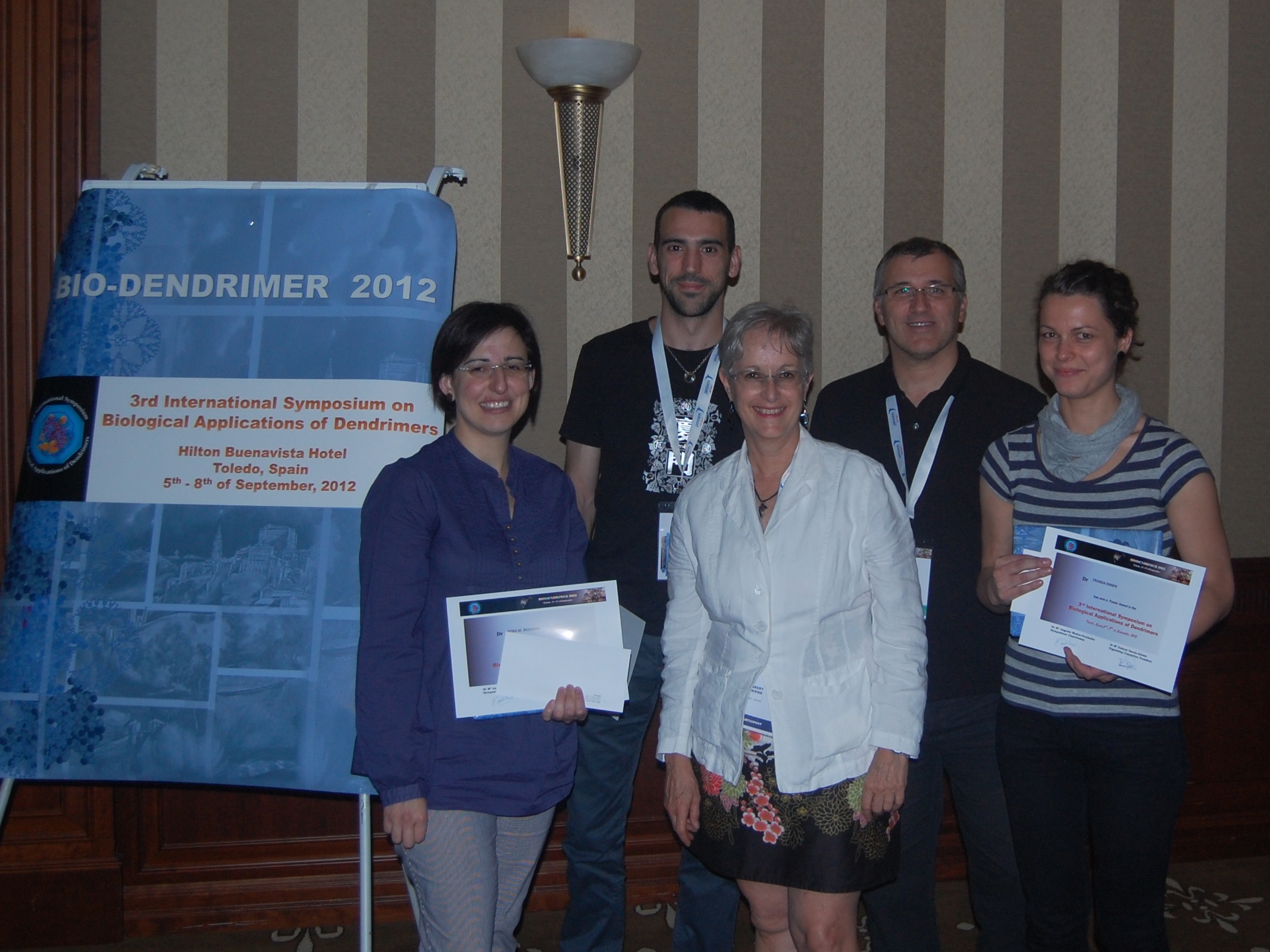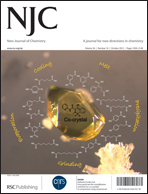This month sees the following articles in New Journal of Chemistry that are in the top ten most accessed:-
Rhodamine-based bis-sulfonamide as a sensing probe for Cu2+ and Hg2+ ions
Kumaresh Ghosh , Tanmay Sarkar , Asmita Samadder and Anisur Rahman Khuda-Bukhsh
New J. Chem., 2012,36, 2121-2127 DOI: 10.1039/C2NJ40391A
Highly efficient polymer solar cells based on poly(carbazole-alt-thiophene-benzofurazan)
Bin Zhang , Xiaowen Hu , Minquan Wang , Huiping Xiao , Xiong Gong , Wei Yang and Yong Cao
New J. Chem., 2012,36, 2042-2047 DOI: 10.1039/C2NJ40309A
Selective and competitive cysteine chemosensing: resettable fluorescent “turn on” aqueous detection via Cu2+ displacement and salicylaldimine hydrolysis
Olga G. Tsay , Kang Mun Lee and David G. Churchill
New J. Chem., 2012,36, 1949-1952 DOI: 10.1039/C2NJ40387K
One-pot hydrothermal synthesis of graphene quantum dots surface-passivated by polyethylene glycol and their photoelectric conversion under near-infrared light
Jianhua Shen , Yihua Zhu , Xiaoling Yang , Jie Zong , Jianmei Zhang and Chunzhong Li
New J. Chem., 2012,36, 97-101 DOI: 10.1039/C1NJ20658C
Synthesis and applications of new triphenylamine dyes with donor–donor–(bridge)–acceptor structure for organic dye-sensitized solar cells
Chun Sakong , Hae Joong Kim , Se Hun Kim , Jin Woong Namgoong , Jong Ho Park , Jang-Hyun Ryu , Boeun Kim , Min Jae Ko and Jae Pil Kim
New J. Chem., 2012,36, 2025-2032 DOI: 10.1039/C2NJ40374A
MOFs, MILs and more: concepts, properties and applications for porous coordination networks (PCNs)
Christoph Janiak and Jana K. Vieth
New J. Chem., 2010,34, 2366-2388 DOI: 10.1039/C0NJ00275E
Reduced graphene oxide supported FePt alloy nanoparticles with high electrocatalytic performance for methanol oxidation
Zhenyuan Ji , Guoxing Zhu , Xiaoping Shen , Hu Zhou , Chaomin Wu and Min Wang
New J. Chem., 2012,36, 1774-1780 DOI: 10.1039/C2NJ40133A
Preparation of graphene–TiO2 composites with enhanced photocatalytic activity
Kangfu Zhou , Yihua Zhu , Xiaoling Yang , Xin Jiang and Chunzhong Li
New J. Chem., 2011,35, 353-359 DOI: 10.1039/C0NJ00623H
1,1′-Diamino-5,5′-azotetrazole: a nitrogen rich compound
Fang Li , Xiaomin Cong , Zhiming Du , Chunlin He , Linshuang Zhao and Lingqiao Meng
New J. Chem., 2012,36, 1953-1956 DOI: 10.1039/C2NJ40109F
A facile one-pot method for synthesis of low-cost magnetic carbon nanotubes and their applications for dye removal
Fei Yu , Junhong Chen , Mingxuan Yang , Lu Zhou , Lu Jin , Chang Su , Fanglin Li , Lu Chen , Zhiwen Yuan , Linlin Yu and Jie Ma
New J. Chem., 2012,36, 1940-1943 DOI: 10.1039/C2NJ40382J
Why not take a look at the articles today and blog your thoughts and comments below.
Fancy submitting an article to New Journal of Chemistry? Then why not submit to us today or alternatively email us your suggestions.


























